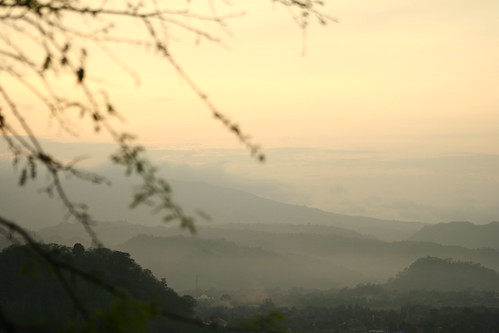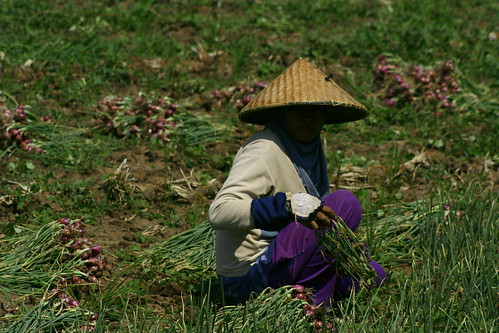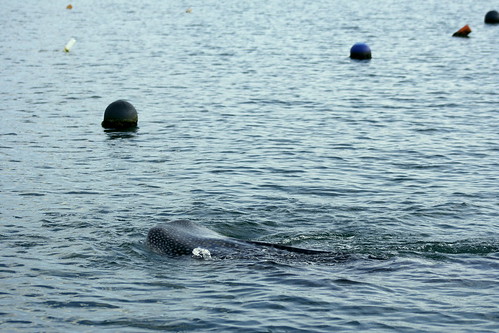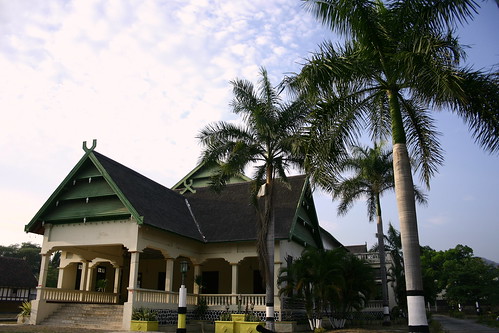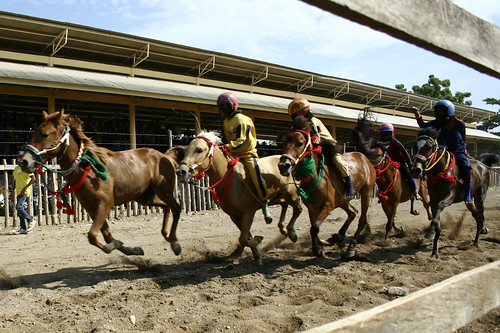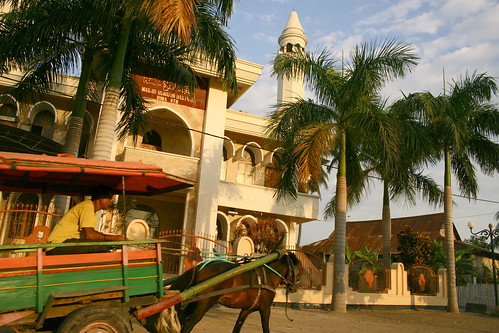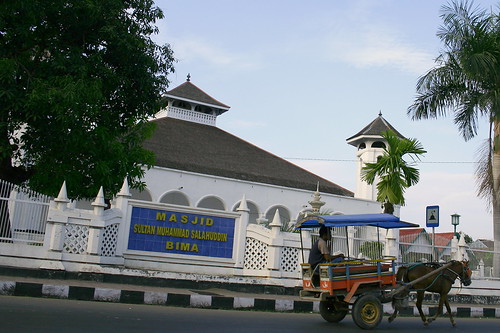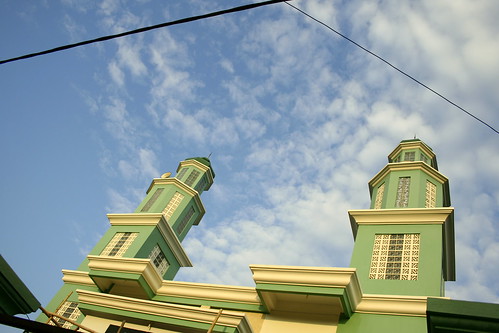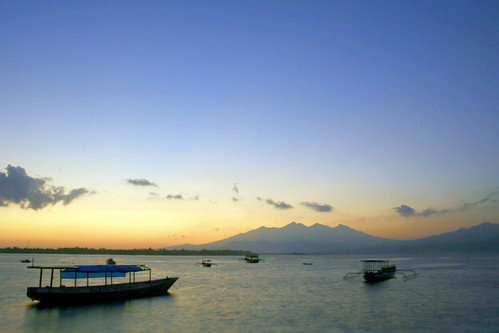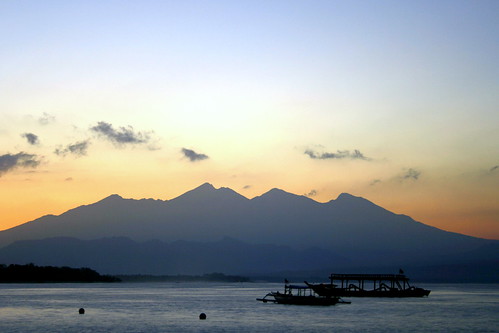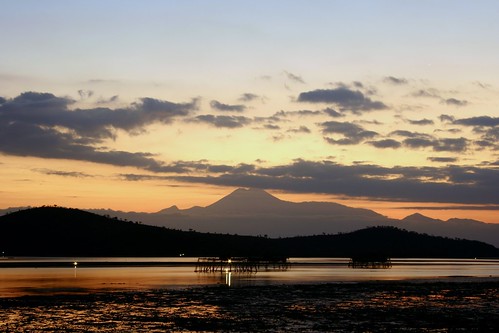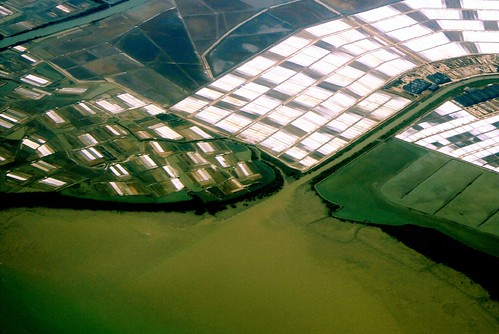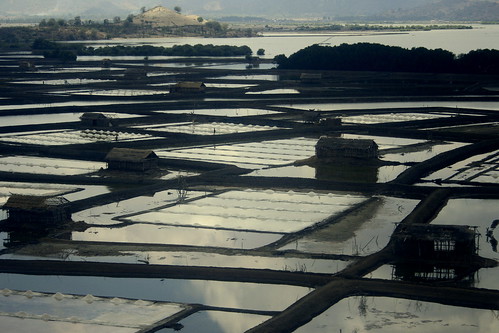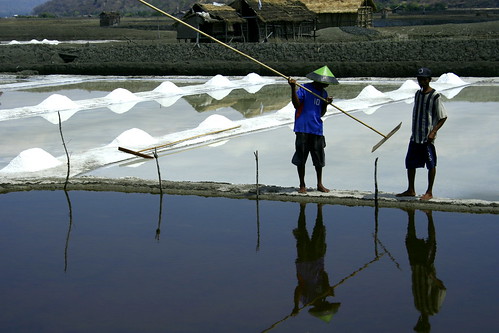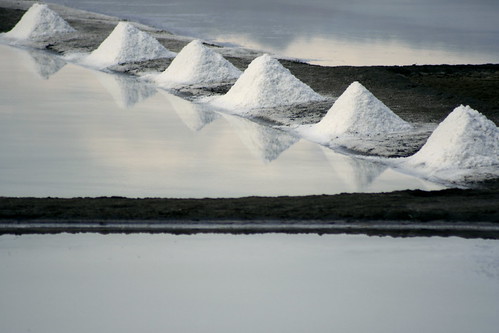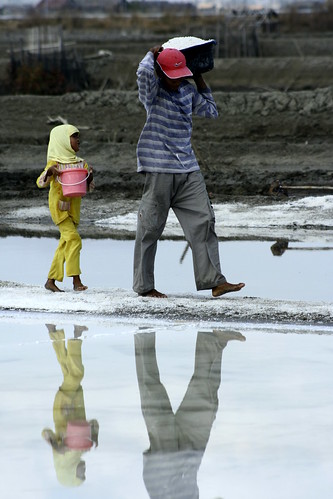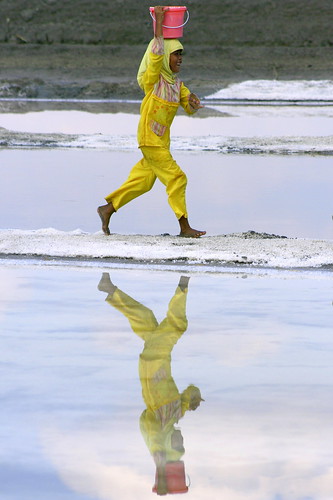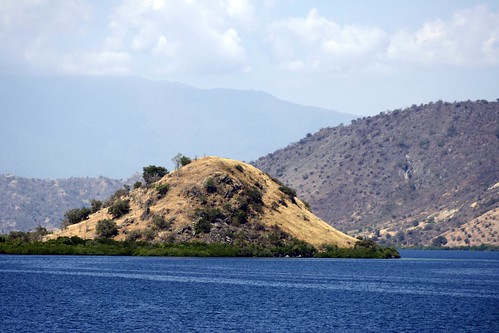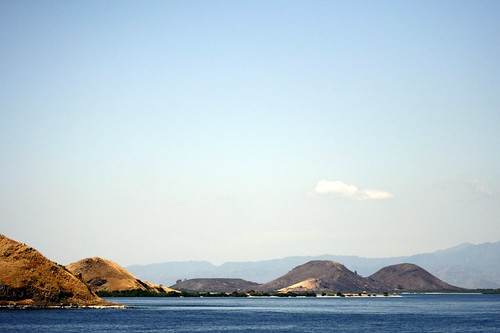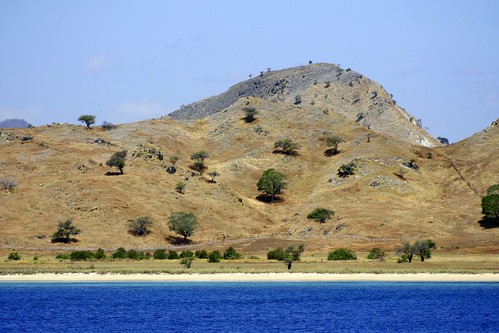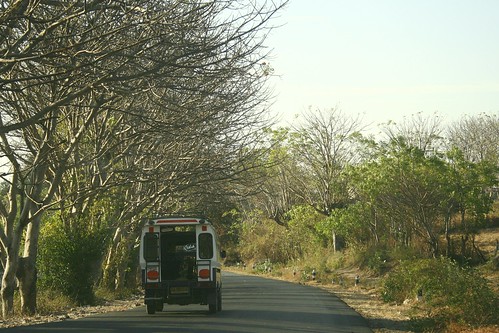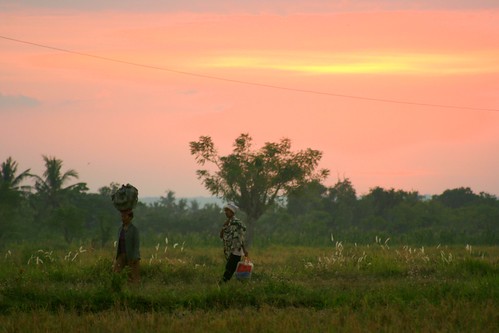playing with the whale sharks of Dompu
Sumbawa the island offers a lot for the hardy tourists, if people can get over the distance and the inconvenience in getting there. But nature in its unspoilt glory can offer lots of rewards. Think of surfing, volcano trekking and traditional horse racing. Now, let me add, playing with whale sharks.
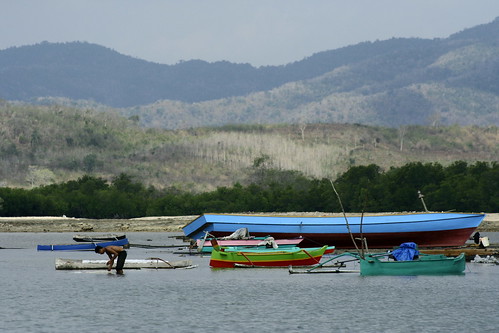
boats in Pulao Bajo
Canon EOS 350D Digital, 1/3200s, f/5.6, 160mm, ISO 400
The place is Pulau Bajo, one of the numerous islands dotting the northern central coast of Dompu. Vegetation, much less agriculture, is scarce in the island. It is just like a big outcrop of dusty brown sand and boulder crags. Nothing much is green there during summer except for the tracts of mangrove at its coast. What it does have are three villages and where there are people, the introduction of seaweed mariculture was not difficult. Of late, the island has done significant progress in seaweed farm development hence the visit.
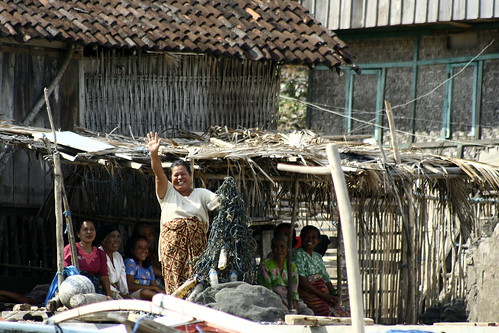
Pulao Bajo women seaweed farmers
Canon EOS 350D Digital, 1/320s, f/5.6, 255mm, ISO 100
So there we were in a boat, checking out the seaweed growth, when suddenly we were stalked by some big fish. It was large, at least 25 feet long, and it has a dorsal fin that stuck out like that of a shark.

the profile of the “big fish” in Pulau Bajo, Dompu, Sumbawa Island
Canon EOS 350D Digital, 1/800s, f/5.6, 300mm, ISO 100
Instinctively, we got alarmed. The boat driver, a resident of the island, said something in the local Mbojo (Bima) language. Lost in translation, the lady in our group got panicky as the giant fish ringed our boat in concentric circles, getting closer and closer. The driver was smiling so I took this as a good sign. It obviously was not his first encounter. Finally, the fish made a pass under our boat. Beneath us, it looked dark and looming. Our outrigger boat was only 8 feet long and the “monster” was three times bigger. We clearly were overmatched.
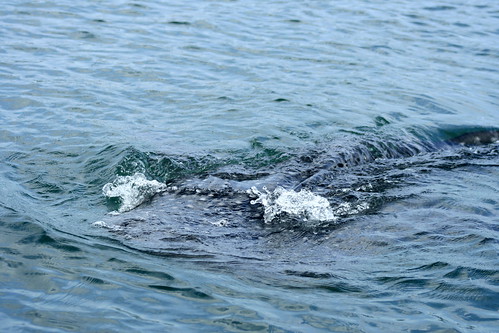
the approaching giant
Canon EOS 350D Digital, 1/400s, f/4.5, 75mm, ISO 100
Playing with us, it went away for awhile but came back suddenly. It approached the boat purposely. When it was 10 feet away from us, it opened its mouth and everybody yelped. Then it became obvious to me. This was a whale shark. Its huge mouth was flat, round, probably about 3 feet wide and was in front of its head. In contrast, sharks have mouths at the underside of their head. The sharp scary teeth which make the shark’s jaw famous were missing. Whale sharks are filter feeders which eat planktons for food. We could see distinctive white spots covering its thick gray shiny body. But it was so big that its presence overwhelmed us.
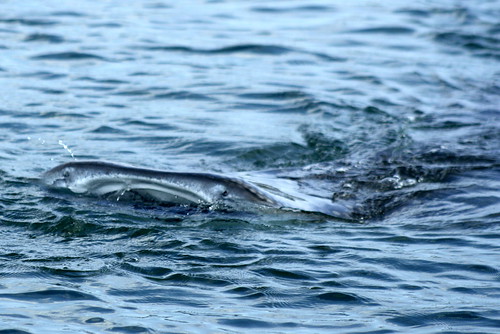
the gaping mouth of the whale shark
Canon EOS 350D Digital, 1/800s, f/4.5, 135mm, ISO 100
With all the excitement, I still tried to take photographs of this wonderful creature. Too bad I could not get a higher elevation point to take a long shot. An underwater picture would have been nice but that was no option either. My photos clearly could not do justice.
We quizzed the driver and he said that they are fairly common in the island. People mostly leave them alone although others said that the meat can be palatable. He assured us that the locals consider them mostly as friends and leave them generally unharmed. Whale sharks are obviously extremely social and would toy with any boat in their search for company.
Clearly, in this tiny island in Dompu sits an untapped attraction. Ecotourism could not be any better than guaranteed close encounters with these gentle giants. I would be hard-pressed in describing the experience. Amazing becomes an understatement.
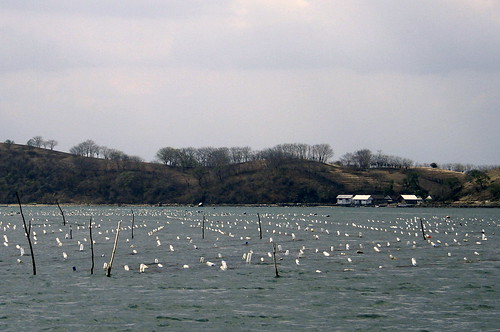
the Pulao Bajo seaweed farms, Dompu, Sumbawa Island, Nusa Tenggara Barat, Indonesia
Canon EOS 350D Digital, 1/1600s, f/5.6, 55mm, ISO 100
getting there
From Bima, Dompu is about 2.5 hours by private car, about 3.5 hours if by public bus. Turn north at Manggelewa district and ask directions for the small local dock for the islet of Pulau Bajo. The island can be covered in 1.5 hours. Boat rental varies from 15 to 30USD.






